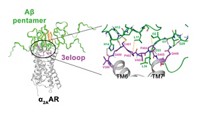Advertisement
Grab your lab coat. Let's get started
Welcome!
Welcome!
Create an account below to get 6 C&EN articles per month, receive newsletters and more - all free.
It seems this is your first time logging in online. Please enter the following information to continue.
As an ACS member you automatically get access to this site. All we need is few more details to create your reading experience.
Not you? Sign in with a different account.
Not you? Sign in with a different account.
ERROR 1
ERROR 1
ERROR 2
ERROR 2
ERROR 2
ERROR 2
ERROR 2
Password and Confirm password must match.
If you have an ACS member number, please enter it here so we can link this account to your membership. (optional)
ERROR 2
ACS values your privacy. By submitting your information, you are gaining access to C&EN and subscribing to our weekly newsletter. We use the information you provide to make your reading experience better, and we will never sell your data to third party members.
Environment
BPA Metabolite Has Bad And Good Sides
Bisphenol A metabolite strongly binds estrogen receptors and could be useful in drug design, modeling study confirms
by Stephen K. Ritter
October 8, 2012
| A version of this story appeared in
Volume 90, Issue 41
A molecular modeling study suggests that the controversial polycarbonate plastic building block bisphenol A may be less problematic as an endocrine-disrupting compound than one of its metabolites (PLoS One, DOI: 10.1371/journal.pone.0046078). BPA structurally resembles estradiol and binds weakly to estrogen receptors. Thus, BPA is thought to disrupt estrogen signaling and has been associated with health problems, including cancer, diabetes, and childhood obesity. In a 3-D modeling study, Michael E. Baker and Charlie Chandsawangbhuwana of the University of California, San Diego, found that a BPA metabolite known as MBP, which has three more carbon atoms between the phenol rings than does BPA, fits better into estrogen receptors than BPA itself. Previous studies have found that MBP binds 1,000 times more strongly than BPA. But the structural basis for the higher affinity hasn’t been determined. The UCSD researchers discovered that MBP’s longer structure allows both ends of the molecule to interact with amino acids in the receptors, just like estradiol does. Because it is shorter, BPA contacts the receptors only at one end. MBP levels in people should be monitored for possible health concerns, Baker says. He also suggests MBP could be used as a template to develop drugs that bind estrogen receptors to treat conditions linked to abnormal estrogen activity, such as breast and prostate cancers.





Join the conversation
Contact the reporter
Submit a Letter to the Editor for publication
Engage with us on Twitter